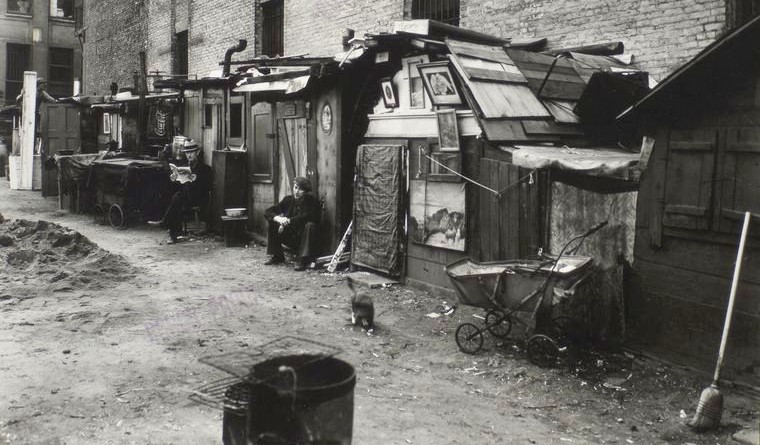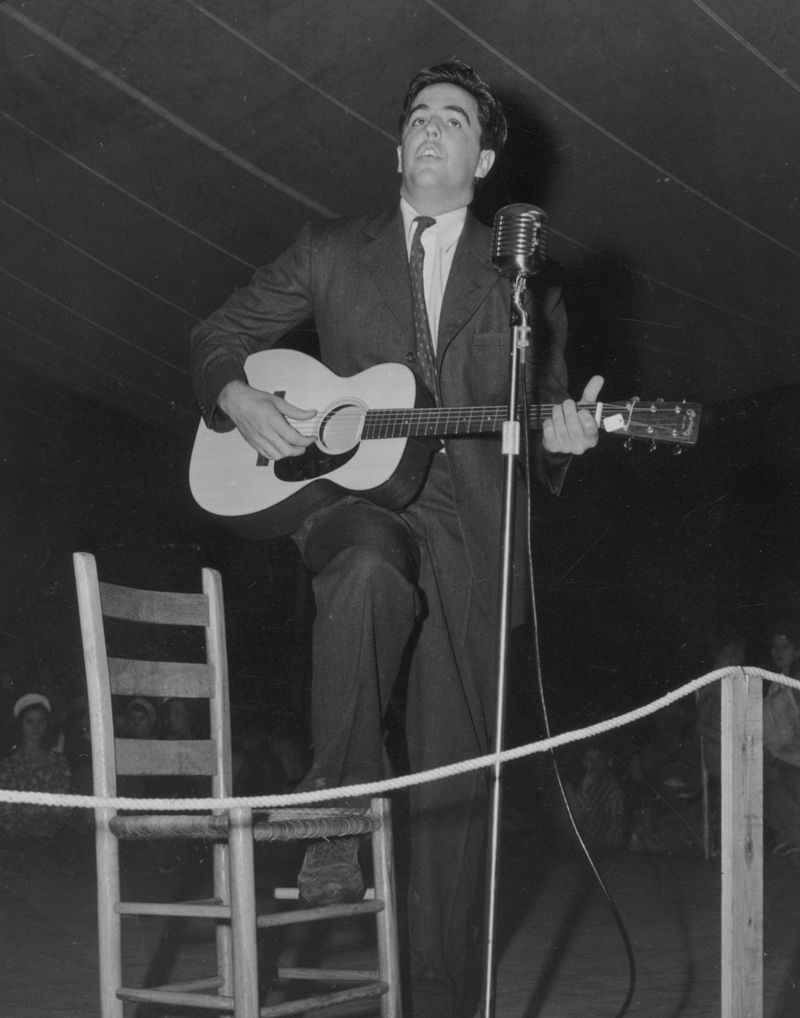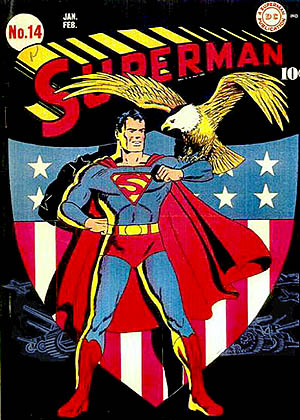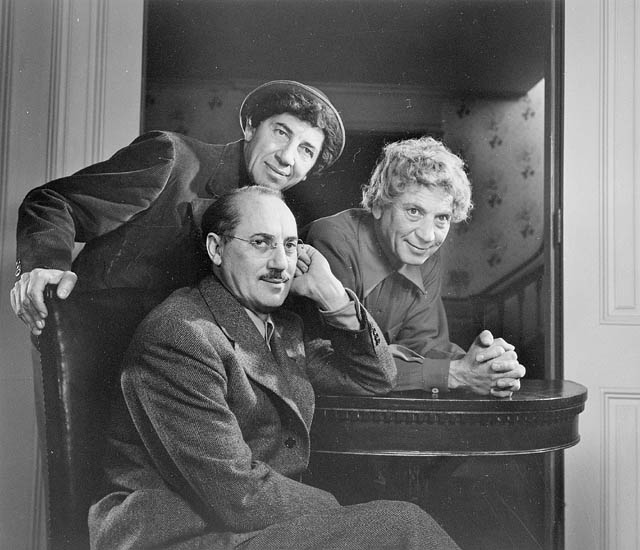
Popular Culture and the Great Depression
Popular Culture During the Great Depression
The popular culture of the 1930s was fraught with contradictions. It was, simultaneously, a decade of traditionalism and of modernist experimentation, of sentimentality and “hard-boiled” toughness, of longings for a simpler past and fantastic dreams of the future.

It was a decade in which many Americans grew increasingly interested in tradition and folk culture. Under the leadership of Alan Lomax, the Library of Congress began to collect folk songs. Plus, folk singers like Woody Guthrie and Pete Seeger attracted large audiences.
Henry Ford, who had revolutionized the American landscape through the mass production of cars, devoted his energies and fortune to a new project: Greenfield Village, a collection of historic homes and artifacts located near Detroit. At the same time, the Rockefeller family restored colonial Williamsburg in Virginia.
Many prominent intellectuals saw modern society as excessively individualistic and fragmented. In response, they looked to the past. Eleven leading white Southern intellectuals, known as the Southern Agrarians, issued a manifesto, I’ll Take My Stand, urging a return to an agrarian way of life. Another group of distinguished intellectuals known as the New Humanists, led by Irving Babbitt and Paul Elmer More, extolled classical civilization as a bulwark against modern values. One of the decade’s leading social critics was Lewis Mumford. In volumes like Technics and Civilization (1934), Mumford examined how the values of a pre-machine culture could be blended into modern capitalist civilization.

And yet, for all the emphasis on tradition, the 1930s was also a decade in which modernism in architecture and the arts became increasingly pronounced. Martha Graham developed American modern dance. William Faulkner experimented with “stream-of-consciousness” in novels like As I Lay Dying (1930). John Dos Passos’s avant garde U.S.A. trilogy combined newspaper headlines, capsule biographies, popular song lyrics, and fiction to document the disintegration of Depression-era society. The architect R. Buckminster Fuller and the industrial designer Walter Dorwin Teague employed curves and streamlining to give their projects a modern appearance. Nothing better illustrated the concern with the future than the 1939 New York World’s Fair: the self-proclaimed “Fair of the Future” promised to show fairgoers “the world of tomorrow.”
Beset by deep anxieties and insecurities, many Americans in the 1930s hungered for heroes. Popular culture offered many: superheroes like Superman and Batman, who appeared in the new comic books of the ’30s; tough, hard-boiled detectives in the fiction of Dashiell Hammett and Raymond Chandler, and radio heroes like “The Lone Ranger” or “The Shadow.”
The Depression was, in certain respects, a powerful unifying experience. A new phrase, “the American way of life,” entered the American vernacular. Public opinion polls and statistical surveys that gave the public a better sense of what the “average American” thought, voted, and ate also emerged. The new photojournalism that appeared in new magazines like Life helped to create a common frame of reference. Yet regional, ethnic, and class differences occupied an important place in the literature of the 1930s. The great novels of the decade successfully combined social criticism and rich detail about the facts of American life in specific social settings. In his novels of fictional Yoknapatawpha County, William Faulkner explored the traditions and history of the South. James T. Farrell’s Studs Lonigan trilogy (1932-1935) analyzed the impact of urban industrial decay on Catholic youth, while Henry Roth’s Call It Sleep (1934) analyzed the assimilation of Jewish youth to American life. John Steinbeck’s Grapes of Wrath (1939) examined the struggle of a poor Oklahoma farming family migrating to California. Richard Wright’s classic Native Son (1940) analyzed the ways that poverty and prejudice in Chicago drove a young African American to crime.

Hollywood Versus History
Hollywood during the Great Depression
Hollywood played a valuable psychological role during the Great Depression. It provided reassurance to a demoralized nation. Even at the deepest depths of the Depression, sixty to eighty million Americans attended movies each week.

Movies reflected a despairing public’s mood during the Depression’s earliest years, as Tommy-gun toting gangsters, haggard prostitutes, and sleazy backroom politicians and lawyers appeared on the screen. Screen comedies released in these years expressed an almost anarchistic disdain for traditional institutions and values. The Marx Brothers spoofed everything from patriotism to universities, W.C. Fields ridiculed families, and Mae West used sexual innuendo to poke fun at the middle class code of sexual propriety.
A renewed sense of optimism generated by the New Deal combined with industry self-censorship to produce new kinds of films during the Depression’s second half. G-men, detectives, western heroes, and other defenders of law and order replaced gangsters. Audiences enjoyed Frank Capra comedies and dramas in which a little man stands up against corruption and restores America to itself. A new comic genre arose—the screwball comedy–presented a world where rich heiresses wed impoverished young men, keeping alive a vision of America as a classless society.
In the face of economic disaster, the fantasy world of the movies sustained a traditional American faith in individual initiative and in government and upheld a common American identity of transcending social class.

History Through…
…Music
Music helps to capture the mood and atmosphere of a particular historical era. When Americans remember the Depression, certain songs immediately come to mind: “Brother, Can You Spare a Dime?” or Franklin D. Roosevelt’s theme song, “Happy Days Are Here Again.”
At first, it seemed as if the Depression would have disastrous consequences for the nation’s music industry. Record sales, which had reached 100 million copies a year during the mid-1920s, plunged to just ten million in 1932. But growing radio networks, car radios, and movie soundtracks helped the music industry through the rough times.
During the Depression, a variety of factors helped to create a shared musical culture in the United States. The growth of nationwide radio networks allowed people in all parts of the country to hear the same music. Car radios meant that Americans could hear music outside the home. Hollywood soundtracks and musicals also popularized songs and musical styles. The Federal Music Project brought classical music to much larger audiences than in the past. The result was that by the end of the 1930s, most Americans would have been familiar with the folk and protest songs of Woody Guthrie, the classical works of Aaron Copland, the jazz of Duke Ellington, and the gospel music of Thomas A. Dorsey.
American music was extraordinarily diverse during the 1930s. There were social protest songs, like “Strange Fruit,” a denunciation of lynching. There were Broadway show tunes, such as George and Ira Gershwin’s “I Got Rhythm,” Irving Berlin’s “Heat Wave,” Cole Porter’s “You’re the Top,” or Rodger and Hart’s “The Lady is a Tramp.” Alan Lomax, the celebrated collector of folk songs brought Leadbelly, Jelly Roll Morton, Muddy Waters, and other folk greats to public attention. What was new was that wide varieties of music, which had previously been confined to particular regions or social groups, were now available nationally. Many of the decade’s most popular songs seemingly had no connection to the decade’s hard times. Yet dance bands and Broadway and Hollywood musicals generated music that helped to unify and cheer up a depressed nation.
The decade’s most popular music was swing, a flowing style of jazz played by big bands. Listened to by adults, it was danced to by the young, who embraced the Lindy Hop, the Susy Q, and other lively dances. Swing’s influence could be heard in the movies, in classical music (especially in the works of Aaron Copland and William Grant Still), and in many other genres.
“Hillbilly” music broke into mass culture in 1923, when a Georgia singer named “Fiddlin’ John” Carson sold 500,000 copies of his recordings. “Country” music’s appeal was not limited to the rural South or West. City people, too, listened to country songs, reflecting a deep nostalgia for a simpler past.
Because of radio and phonograph records, music which would have once existed on the margins of American society now could reach audiences across the nation.
It is perhaps the best known song of the Great Depression. Written in 1930 by composer Jay Gorney and lyricist E.Y. “Yip” Harburg, “Brother, Can You Spare a Dime?” is utterly unlike the more upbeat songs that became popular during the Depression, like “Pennies from Heaven” (“Oh every time it rains/It rains pennies from heaven”).
The lyrics to the song:
They used to tell me I was building a dream
And so I followed the mob
When there was earth to plow or guns to bear
I was always there right on the job
They used to tell me I was building a dream
With peace and glory ahead
Why should I be standing in line
Just waiting for bread?
Once I built a railroad, I made it run
Made it race against time
Once I built a railroad, now it’s done
Brother, can you spare a dime?
Once I built a tower up to the sun
Brick and rivet and lime
Once I built a tower, now it’s done
Brother, can you spare a dime?
Once in khaki suits, gee we looked swell
Full of that yankee doodly dum
Half a million boots went sloggin’ through hell
And I was the kid with the drum
Say, don’t you remember, they called me Al
It was Al all the time
Why don’t you remember, I’m your pal
Say buddy, can you spare a dime?
Originally composed for a 1931 Broadway musical called Americana, “Brother, Can You Spare a Dime?” gave powerful expression to the anger and sense of betrayal felt by many Americans during the Depression’s early years.

Hollywood Versus History
Film
In 1934, Will Hays, head of the Motion Picture Producers and Distributors Association, said that “No medium has contributed more greatly than the film to the maintenance of the national morale during a period featured by revolution, riot and political turmoil in other countries.”
This is the trailer for one of the most influential films of the Great Depression, I am a Fugitive from a Chain Gang:
Although the movie industry considered itself Depression-proof, Hollywood was no more immune from the Depression’s effects than any other industry. To finance the purchase of movie theaters and the conversion to sound, the studios had tripled their debts during the mid- and late-’20s to $410 million. As a result, the industry’s very viability seemed in question. By 1933, movie attendance and industry revenues had fallen by forty percent. To survive, the industry trimmed salaries and production costs, and closed the doors of a third of the nation’s theaters. To boost attendance, theaters resorted to such gimmicks as lower admission prices (cut by as much as 25 cents), double bills, giveaways of free dishes, and Bank Night—in which customer who received a lucky number won a cash prize.
Why did Depression America go to the movies? Escapism is what most people assume. At the movies they could forget their troubles for a couple of hours. Depression films, one left-wing critic maintained, were a modern form of bread and circuses, distracting Americans from their problems, reinforcing older values, and dampening political radicalism.
Yet movies were more than mere escapism. Most films of the depression years were grounded in the social realities of the time. The most realistic films were social problem films—like I am a Fugitive from a Chain Gang—”torn from the headlines,” usually by Warner Brothers or Columbia Pictures. Yet even the most outrageously extravagant Busby Berkeley musicals—portraying chorus girls as flowers or mechanical windup dolls—were generally set against recognizable Depression backdrops.
The kinds of movies that Hollywood produced during the Depression underwent sharp changes as the public mood shifted. During the Depression’s earliest years, a profound sense of despair was reflected in the kinds of characters Americans watched on the screen: a succession of Tommy Gun-toting gangsters, haggard prostitutes, sleazy backroom politicians, cynical journalists, and shyster lawyers. The screen comedies released at the Depression’s depths expressed an almost anarchistic disdain for traditional institutions and conventions. In the greatest comedies of the early depression, the Marx Brothers spoofed everything from patriotism (in Duck Soup) to universities (in Horse Feathers). W.C. Fields ridiculed families and children. Mae West used sexual innuendo and double entendres to make fun of the middle class code of sexual propriety, with lines like “When a girl goes wrong, men go right after her.”
The gangster pictures and sexually suggestive comedies of the early ’30s provoked outrage—and threats of boycotts—from many Protestant and Catholic religious groups. In 1934, Hollywood’s producers’ association responded by setting up a bureau (later known as the “Breen Office”) to review every script that the major studios proposed to shoot and to screen every film before it was released to ensure that the picture did not violate the organization’s “Code to Govern the Making of Talking, Synchronized and Silent Motion Pictures.” The Production Code, drafted by a Jesuit priest, the Father Daniel Lord, had been originally adopted in 1930, but the producers had regarded it as a public relations device, not as a code of censorship.
But in 1933, the newly appointed apostolic delegate to the U.S. Catholic Church, the Most Reverend Amleto Giovanni Cicognani, called on Catholics to launch “a united and vigorous campaign for the purification of the cinema, which has become a deadly menace to morals.” Many Catholics responded by forming the Legion of Decency, which soon had nine million members pledged to boycott films that the Legion’s rating board condemned.
Threatened by a realistic threat of boycotts, the producers decided to enforce the production code and placed one of their employees, Joseph I. Breen, in charge. The code prohibited nudity, profanity, white slavery, miscegenation, “excessive and lustful kissing,” and “scenes of passion” that “stimulate the lower and baser element.” It also forbade Hollywood from glorifying crime or adultery. To enforce the code, the Breen Office was empowered to grant or withhold a seal of approval, and without a seal, a movie could not be played in the major theater chains.
The Breen Office dramatically altered the character of films in the later 1930s. It had at least one positive effect. It led Hollywood to cast more actresses in roles as independent career women, instead of as mere sex objects. More negatively, it encouraged moviemakers to evade the harsher realities of Depression-era life and to shun controversial political and moral issues. It also contributed to what Maury Klein has called a “stylization of technique” as directors and screenwriters searched for subtle, creative, and often witty ways to treat sexuality and violence while avoiding censorship.
A renewed sense of optimism generated by the New Deal combined with Breen Office censorship to produce new kinds of films in the second half of the Depression decade. G-men, detectives, western heroes and other defenders of law increasingly replaced gangsters. Realistic Warner Brothers exposes rapidly declined in number. Instead audiences enjoyed Frank Capra’s comedies and dramas in which a “little man” stands up against corruption. The complex word-play of the Marx Brothers and Mae West increasingly gave way to a new comic genre—the screwball comedy. Movies like It Happened One Night or My Man Godfrey, which traced the antics of zany eccentrics, presented, in film critic Pauline Kael’s words: “Americans’ idealized view of themselves—breezy, likable, sexy, gallant, and maybe just a little harebrained.”
The fantasy world of the movies played a critical social and psychological function for Depression era Americans: In the face of economic disaster, it kept alive a belief in the possibility of individual success, portrayed a government capable of protecting its citizens from external threats, and sustained a vision of America as a classless society. Again and again, Hollywood repeated the same formulas: A poor boy from the slums uses crime as a perverted ladder of success. A back row chorus girl rises to the lead through luck and pluck. A G-man restores law and order. A poor boy and a rich girl meet, go through wacky adventures, and fall in love. Out of these simple plots, Hollywood restored faith in individual initiative, in the efficacy of government, and in a common American identity transcending social class.
It is the quintessential Depression-era musical. Directed by Mervyn LeRoy (who later produced The Wizard of Oz), with songs by Harry Warren and Al Dubin (lyrics) and choreography by Busby Berkeley, Gold Diggers of 1933 starred three of the 1930s leading actresses—Joan Blondell, Ruby Keeler, and Ginger Rogers—who play gold diggers, a pejorative term for women who use their charms to extract money or gifts from a wealthy man.
Made at the Depression’s depths, the film begins with a rousing rendition of the song “We’re in the Money”—“We never see a headline, ‘bout a breadline today…”—only to have the sheriff shut the show down for failing to pay its creditors.
See Ginger Rogers perform “We’re in the Money”: